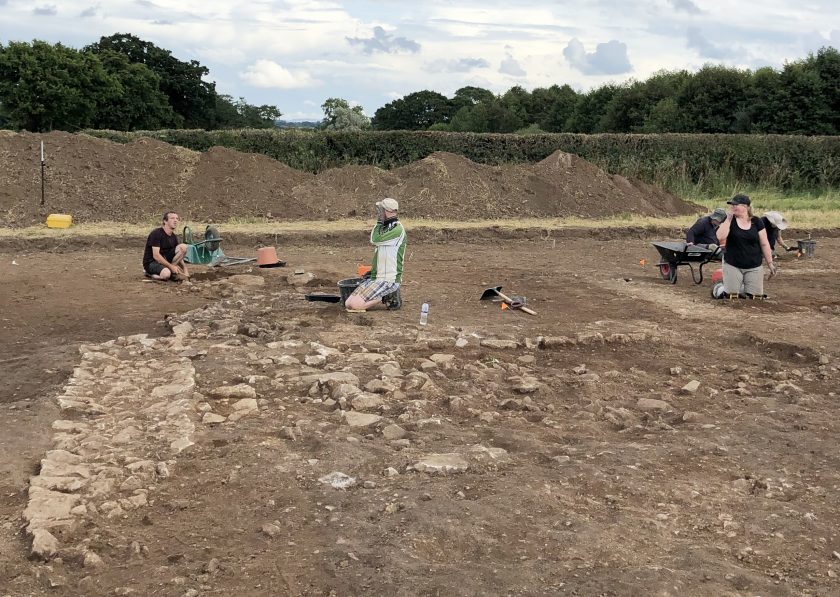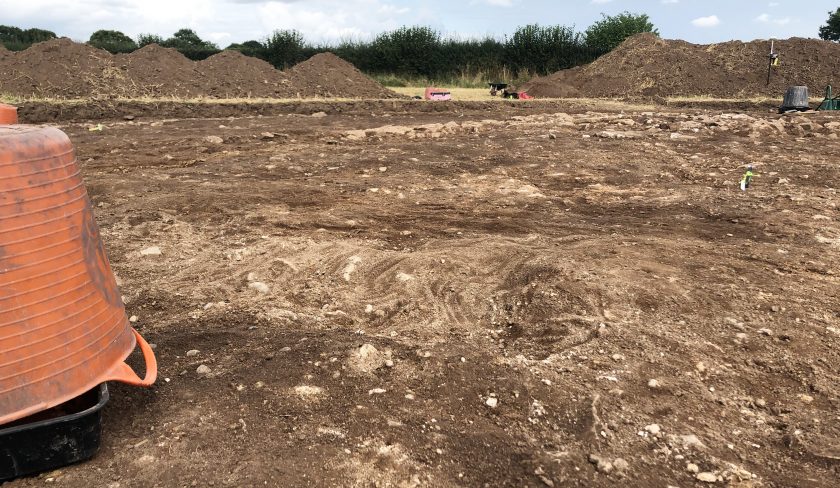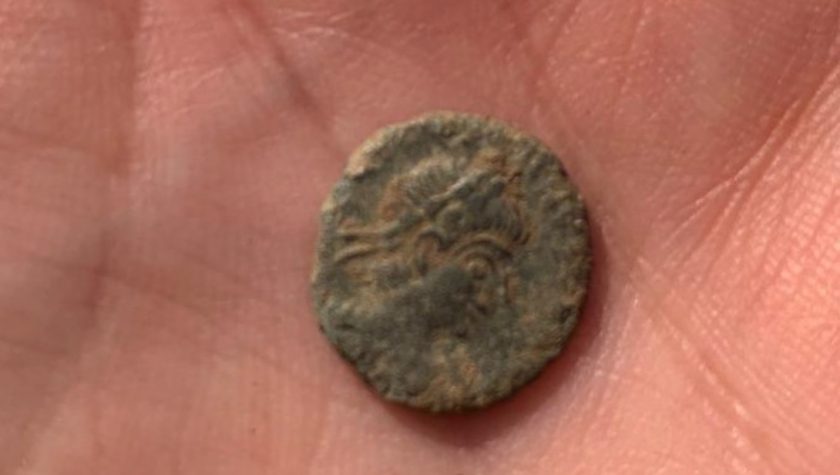Rossett Roman villa dig makes progress with coin discovered from around AD 337 – as archaeologists hunt for bathhouse
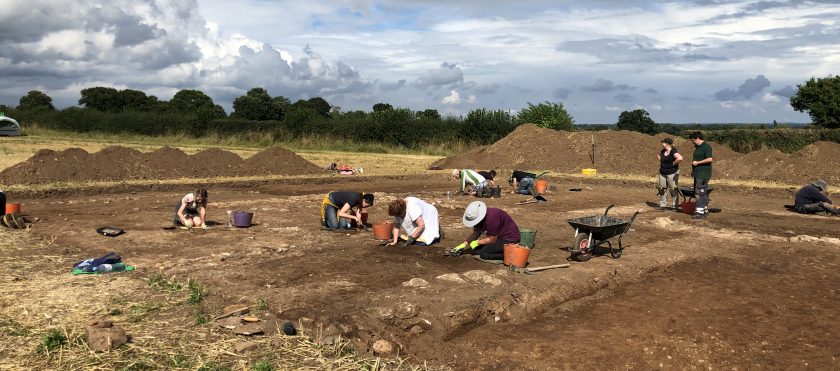
A cooperative effort between Wrexham and Chester is revealing the secrets of the past that have remained undiscovered for well over a millennium.
The ‘working partnership’ between Wrexham Museum and the University of Chester (UoC) sees an active dig taking place in a field in the Rossett area that appears to be confirming the existence of a Roman villa, with speculation of a bathhouse and ‘fine Roman tableware’ being discovered meaning it could have had a high status resident.
The site was discovered through the cooperation of local metal detectorists who discovered Roman material at the site, this sparked a remote sensing survey which revealed clear evidence of a buried structure. The remains appear to be of a fairly typical form with a number of stone and tile buildings surrounding a central courtyard, the survey also suggested its association with a field system, a trackway and other related buildings and structures. Fieldwalking at the site has yielded artefacts from the late 1st century to the early 4th century AD, suggesting that the villa was occupied for the majority of Roman rule in Britain.
At this early stage it appears a corridor style villa is thought to be what has been uncovered so far around 30 metres long, with a possible courtyard. There is some speculation over if there is an eastern range of buildings on the site, or if there is a granary or workers quarters elsewhere in the field with two possible rooms. A trackway is thought to be heading south away from the site, and could be a target for future excavation work.
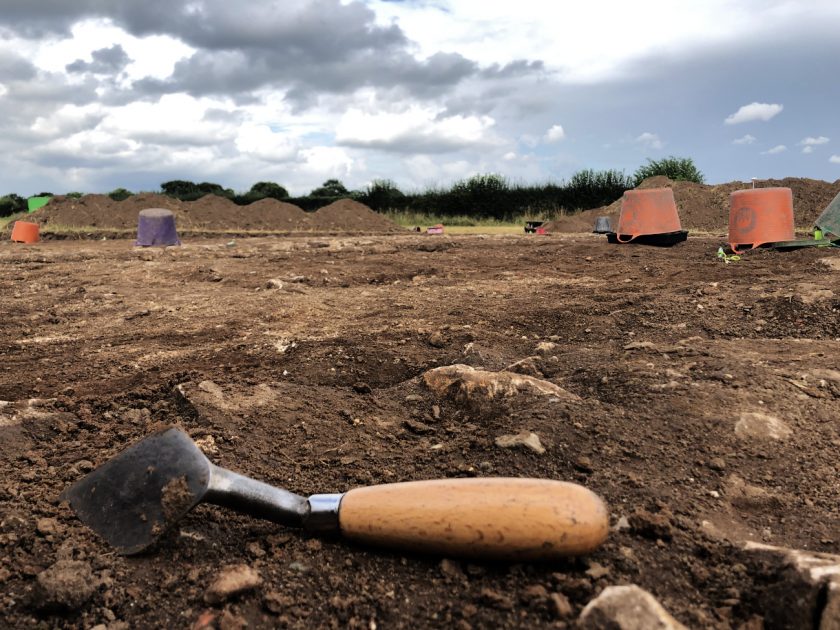
Recent days have seen the dig take place in 28C heat – with storms coming through later yesterday afternoon.
Speaking yesterday during a third day of baking heat at the dig site Steve Grenter Heritage & Archives Lead at Wrexham Museum explained progress, “We are in advance of where we expected to be, we did not expect the archaeology to be so close to the surface. The machine taking the topsoil off last week revealed the top of the wall that we can see. In other areas we think there will be much deeper deposits.”
Explaining the corridor layout Steve added, “What we have here looks like a mirror image of the other end of the ‘corridor’ and looks more preserved, and thats why we are investigating first.”
“We have really been scratching our heads over the Roman period in northeast Wales over the years, there are a few sites that we’re aware of, but they all seem to have military connections. We’ve had no real understanding of what was happening in the countryside really. So the possibility of a villa here suggesting there may well be more villas waiting around in the area.
Dr Caroline Pudney, Senior Lecturer in Archaeology University of Chester detailed what had been found so far, “We have got the outline of the villa itself, the walls, just as they’ve been shown on the geophysics before. That’s fantastic in places they’ve been robbed out. So it looks like people after the buildings presumably have collapsed, or it’s been demolished, they’ve come in and taken the stone, be interesting to look at some of the farm houses locally, to see where it might have gone. And we’ve also inside the rooms, we’re getting some nice finds coming up. So bits of Roman pottery, some samian ware, imported from Gaul (France) and where there’s some more locally made pottery in here in Britain.
Dr Pudney explained the significance of a coin that had been found, “We’ve had also the coin from the house of Constantine, so that dates around AD 337 to AD 341. It tells us that this site was in use from the late first, early second century through into the fourth century, which at least lets us see that it might have been in use for quite a few years.”
Steve explained the goals of the dig, “We have another two and a half weeks to go, with only a three week season this year. We’re hoping by the end of that three weeks to have an understanding of the nature of the remains. Much more of a feel for what wall has been ‘robbed out’, what is a wall that is in situ? What was the state of preservation? Is that a bathhouse? Are there petitions inside the rooms? So overall getting much more of an idea and detail of the site than we currently have off the geophysics – that gives you the outline of the site but doesn’t really increase your understanding of the archaeology.”
“That is the plan for this year and then use that as a springboard for subsequent seasons of work on the site.”
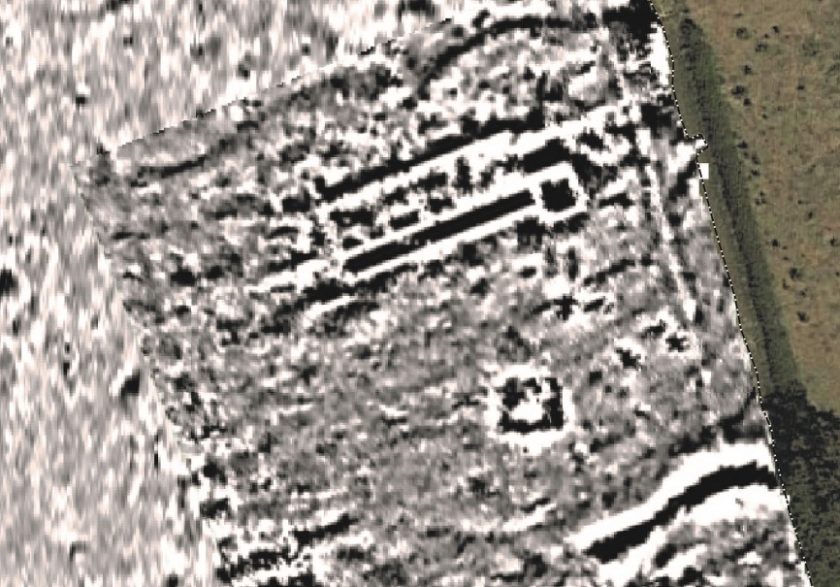
The geophysics scan of the area – the section to the top right is being dug, with the square room and corridor now visible for the first time in possibly 1800 years
A public open day will be held on the 18th September and site tours will be organised for pre-booked groups. Note that the site is on private land and visits to the site will only be available via organised tours or pre booking onto the open day via the Eventbrite ticketing website as and when the link goes live.
The Museum and the University are now planning a programme of work to further investigate the site over the next few years subject to funding and appropriate permissions. The work on the project to date has been funded by the Roman Research Trust and supported by Wrexham Museum and the University of Chester.
Spotted something? Got a story? Email [email protected]

